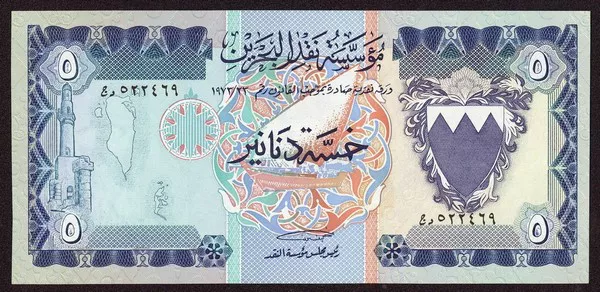The Bahraini dinar, the official currency of the Kingdom of Bahrain, extends its influence beyond national borders, leaving an indelible mark on the global economic landscape. This comprehensive article delves into the countries that have adopted the Bahraini dinar, exploring the historical, economic, and geopolitical factors that have led to its recognition and use beyond Bahrain’s shores.
Historical Context:
To understand the global adoption of the Bahraini dinar, we must first examine its historical roots. Introduced in 1965, the dinar replaced the Gulf rupee and quickly became a symbol of Bahrain’s economic sovereignty. Initially pegged to the British pound, the currency underwent a significant shift in 1980 when it was pegged to the U.S. dollar. This change in pegging reflected Bahrain’s strategic alignment with global economic forces, setting the stage for its international recognition.
3 Countries Utilizing the Bahraini Dinar:
1. Bahrain:
Unsurprisingly, Bahrain is the primary user of the dinar. As the issuing country, the dinar is widely used in daily transactions, and its stability has contributed significantly to Bahrain’s economic prosperity.
2. Oman:
In the early years following its introduction, the Bahraini dinar was also circulated in Oman. However, in 1970, Oman introduced its national currency, the Omani rial, ending the historical use of the Bahraini dinar in the Sultanate.
3. Iraq:
Due to historical ties between Bahrain and Iraq, the Bahraini dinar has been used in some regions of Iraq, particularly in areas close to the Bahrain-Iraq border. This informal acceptance is a testament to the historical and cultural connections between the two nations.
Economic Stability and the Bahraini Dinar:
The strength of the Bahraini dinar on the global stage is rooted in Bahrain’s unwavering commitment to economic stability. The government’s prudent fiscal policies and transparent economic governance have created an environment conducive to international trade and investment. As a result, the dinar has gained recognition for its stability, attracting businesses and investors from various corners of the world.
Pegging Mechanism and Global Trade:
The pegging mechanism, linking the Bahraini dinar to the U.S. dollar, plays a pivotal role in its acceptance in global trade. The fixed exchange rate provides stability, predictability, and ease of transactions, making it an attractive currency for international business dealings. This pegging system facilitates seamless trade relationships and financial transactions, contributing to the dinar’s global relevance.
Financial Sector Resilience and International Transactions:
Bahrain’s robust and well-regulated financial sector serves as a catalyst for the global adoption of the dinar. The Central Bank of Bahrain’s oversight ensures financial stability and transparency, bolstering confidence in the currency. International banks and financial institutions recognize the dinar as a reliable medium for transactions, further solidifying its position in global financial markets.
Diversification Efforts and Economic Impact:
Bahrain’s proactive approach to economic diversification has amplified the influence of the dinar. Recognizing the volatility associated with oil-dependent economies, Bahrain has strategically diversified its economic base. Sectors such as finance, tourism, and manufacturing have flourished, reducing reliance on oil revenues. This economic diversification enhances Bahrain’s economic resilience and contributes to the global acceptance of the dinar.
Global Financial Services Hub and Currency Adoption:
Bahrain’s emergence as a leading financial services hub in the Gulf region has significantly contributed to the international acceptance of the dinar. The country’s financial infrastructure, coupled with a business-friendly regulatory environment, attracts international banks and financial institutions. As a result, the Bahraini dinar is increasingly utilized in cross-border financial transactions, reinforcing its status in the global financial services arena.
Political Stability and Geopolitical Significance:
The political stability of Bahrain is a cornerstone of the global recognition of its currency. Amidst regional geopolitical dynamics, Bahrain’s commitment to stability and diplomatic efforts has positioned the dinar as a symbol of trust and reliability. The country’s ability to navigate political challenges enhances the confidence of nations engaging in economic partnerships, contributing to the currency’s global significance.
Geopolitical Considerations and Currency Adoption:
While navigating regional geopolitical dynamics, Bahrain’s strategic positioning and diplomatic engagements play a crucial role in the international adoption of the dinar. The country’s efforts to maintain positive relationships with neighboring nations and int
ernational partners mitigate potential risks associated with regional tensions. This geopolitical finesse contributes to the stability and acceptance of the Bahraini dinar on the global stage.
Global Economic Shifts and Bahrain’s Adaptability:
Bahrain’s ability to adapt to global economic shifts is instrumental in preserving the global relevance of its currency. The country’s nimble responses to fluctuations in oil prices, changes in global trade dynamics, and economic uncertainties position the Bahraini dinar as a resilient currency. This adaptability ensures that the dinar remains a stable medium of exchange in the face of evolving global economic landscapes.
Challenges and Mitigation Strategies:
No currency is immune to challenges, and the Bahraini dinar is no exception. Global economic downturns, geopolitical uncertainties, and external economic shocks can impact the stability and acceptance of the dinar. However, Bahrain’s proactive measures, including economic diversification, a resilient financial sector, and diplomatic finesse, position the currency to withstand challenges and maintain its standing in the international arena.
Future Outlook:
As we look ahead, the Bahraini dinar’s global significance seems poised to endure. Bahrain’s commitment to economic diversification, financial sector resilience, and adaptive governance positions the dinar as a symbol of stability in the Gulf region and beyond. While challenges may emerge, Bahrain’s proactive measures and strategic planning suggest a continued trajectory of global acceptance and relevance for the dinar.
See Also: Bahraini Dinar (BHD) Currency: History, Symbol, Codes & Denominations
Conclusion:
In conclusion, the international adoption of the Bahraini dinar is a multifaceted phenomenon shaped by historical, economic, and geopolitical factors. From its historical roots to its current standing as a global currency, the Bahraini dinar reflects the economic resilience and adaptability of the Kingdom of Bahrain. As Bahrain continues to navigate the complexities of the global economy, the dinar stands as a symbol of economic strength, contributing to the country’s stature in the international economic arena.


